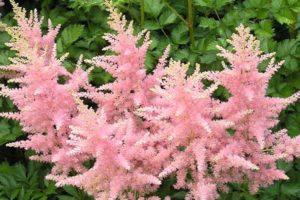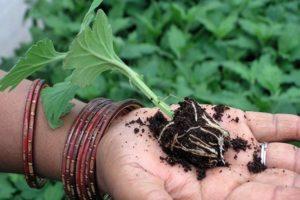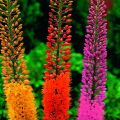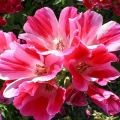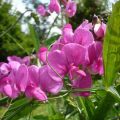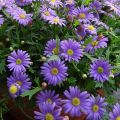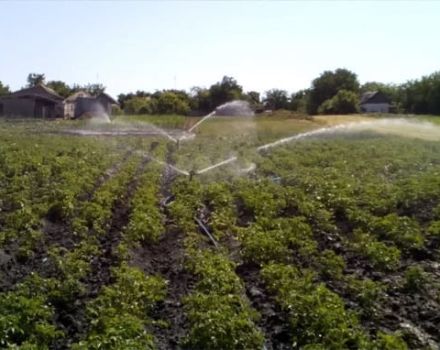Growing tunbergia from seeds and outdoor care, the 7 best varieties
Spectacular tunbergia is able to decorate the adjoining territory, wrapping around fences, trellises, gazebos, walls of houses. This feature allows you to successfully use the plant in the construction of various landscape compositions. The culture is versatile in use, since it can grow in the garden and indoors. Thunbergia grown from seeds delights passers-by with its bright flowering and will not leave indifferent any grower.
Botanical features of the plant
Thunbergia is a herb belonging to the Acanthus family. There are annual and perennial species that are most often grown in open soil. The plant is named after the Swedish naturalist and explorer Karl Peter Thunberg, who studied the flora and fauna of South Japan and Africa with particular interest. Residents of European countries extol another name for tunbergia - Black Suzanne, since in the center of the flower there is a peephole of a dark purple hue.
In one year, the culture can grow 2-8 m in length. The plant is distinguished by a strong root system and branched ground shoots. The leaves have an oval shape, a green tint and small embossed veins, short petioles, oppositely located on the weaving stem.
The leaf blade can have both a smooth and a jagged edge, as well as a small number of trichomes on the back of the leaf. The diameter of the flower's calyx is 4 cm, and the bud itself consists of 5 wide petals, singly located on the peduncles. The color of flowers can be very diverse, ranging from white to red.
After flowering, a fruit is formed - a box in which there are seeds of 4 mm in diameter, oblong in shape with a rough brown skin.
Growth area
Tunbergia grows in the Asian and African tropics, occupying a vast territory due to its size. Despite the fact that these latitudes do not differ in a temperate continental climate, the plant takes root in the garden without problems.
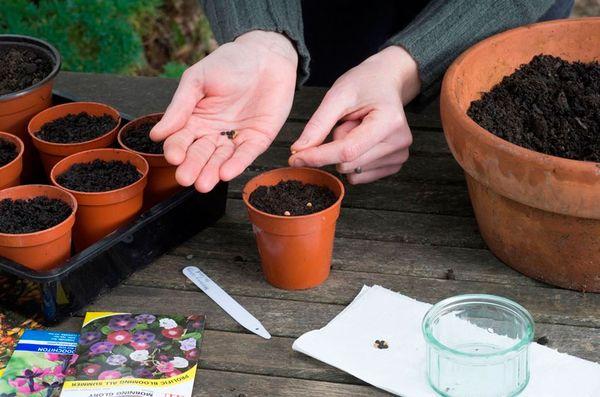
Thunbergia in landscape design
Tunbergia looks great in a single planting without the use of other plants.Several shrubs can be grown next to it, which complement each other with color shades. It goes well with fuchsia, asparagus. Thunbergia is used to compose compositions with plants such as ivy, sweet peas, honeysuckle.
Also, culture is able to mask unsightly parts of walls and decorate balconies. But the thickets of a tropical perennial plant are used to create hedges, and arbors, plots are decorated with flowerpots, pots.
The best types and varieties of tunbergia
Cultivated vines are represented by the following most common species and varieties.
Winged (Thunbergia alata)
A bright climbing plant, its maximum height can reach more than 2 meters. Small flowers with a diameter of 3-4 cm of creamy shade with a dark brown outline bloom on long pedicels. The leaves are ovoid, with small notches at the edges. The species does not tolerate the sun well and in most cases prefers partial shade.
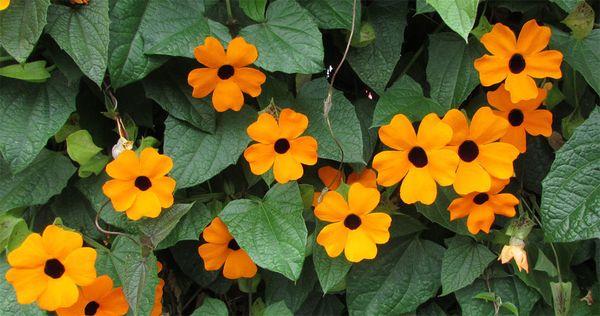
Fragrant
Climbing bushes of tunbergia, which grow up to 6 m in open ground, and up to 2 m in indoor conditions. Ribbed stems with trichomes, leaves are large, heart-shaped, oppositely located. The flowers are solitary, located in the leaf axils.
Large-flowered grandiflora or blue
The culture is distinguished by the presence of large peduncles, powerful and strong branching. The main feature is that the plant is evergreen and has finger-like leaves in small quantities. Tunbergia flowers are collected in racemose inflorescences and can have a wide variety of shades.
Buttiscombe
Tunbergia Bittiscomba looks like a tall climbing liana that needs reliable support. The elliptical leaves are bright green in color, in the axils of which there are large flowers of a blue-purple hue. The shape of the flower resembles an elongated tube from a small and large pharynx, the inner part of which is yellow.

Mysore or Mizoren
Evergreen liana up to 6 m high. The stiff stalk of tunbergia is partially covered with long leaves. Clusters of inflorescences drooping, flowers of an unusual shape, similar to the open mouth of a snake that is preparing to attack.
Bicolor
The variety differs in that it is erect and small. The maximum shrub grows up to 1.5 m in height, is characterized by spreading and thin faceted branches. Large flowers of tunbergia up to 7 cm in length, have the shape of a tube of delicate blue color inside with white stripes along the contour and yellow color outside.
Black Eyed Suzanne
Gardeners cultivate Tunbergia as a climbing liana or an upright shrub. Differs in a wide variety of colors, but the characteristic feature is a dark core.
Optimal conditions for growth and flowering
Bright lighting is necessary for the normal germination of tunbergia. But in the period from 12 to 3 pm it is better to provide shade so as not to expose the plant to the scorching rays of the sun. The optimum temperature ranges from 21 to 25 degrees.

How to grow a crop from seeds
To properly grow tunbergia from seeds, you need to carefully study the technology of sowing and caring for sprouts.
Sowing terms and technology
Before planting, the seed must be treated with growth stimulants.
Sowing is recommended at the end of winter or in the first month of spring.
Seeding Sequence Algorithm:
- Fill the containers with moistened soil mixture enriched with peat, turf soil and sand. Instead of sand, you can use leafy earth or humus. Mix all three components in equal amounts.
- Place the seeds on the surface and sprinkle with a small layer of prepared soil.
- Water the planting material carefully.
- Cover containers with a special film and place in a lighted place, avoiding direct sunlight.
In the future, it is important to create favorable conditions for germination of tunbergia sprouts and carry out appropriate care.
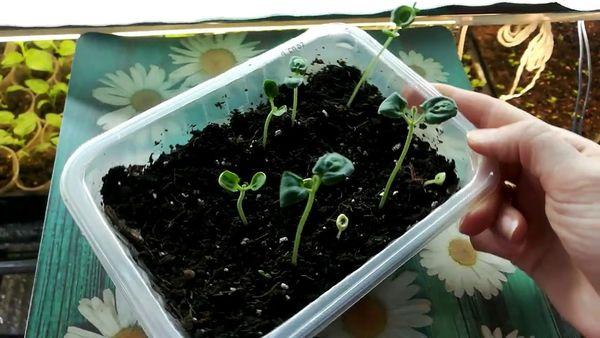
Germination and care of sprouts
Seedlings should be kept in a room with temperatures ranging from 22 to 24 degrees. Also, make sure that the soil in the container does not dry out and systematically moisten it. Remove the shelter as soon as the first shoots appear. With good care and acceptable conditions, they will appear within a week after disembarkation.
When 2 true leaves are formed, the seedlings need to be thinned out, removing all weak, unadapted sprouts. You can pinch to make the bushes thicker, but do this only when the seedlings reach 12-15 cm. Every week, be sure to fertilize the tunbergia with substances containing nitrogen.
Outdoor transplant
Plant tunbergia seedlings in a flower bed after the frost has passed. Better to give the plant the eastern or southern part of the garden. The soil is encouraged to be drained, with a neutral environment, enriched with nutrients.
When planting, observe the distance between the holes at least 30-45 cm. It is imperative to install a support in the form of a lattice or wire. After planting, water the seedlings well.
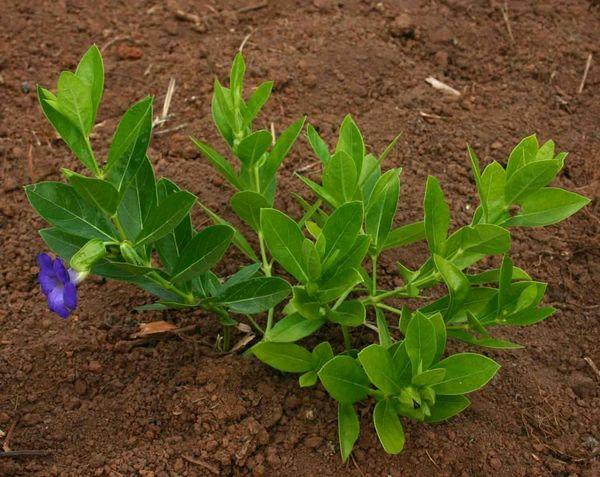
The flowering of tunbergia will not keep you waiting long, but will delight you 100 days after pinching.
Flower care
Tunbergia is quite unpretentious in care and grows successfully after a successful planting. But it is still important to provide the culture with proper further care, which includes high-quality watering, fertilization, weeding and protection from diseases and pests.
Watering
The plant loves moisture, especially during the flowering period, you need to regularly check the soil and eliminate signs of drying out. With insufficient moisture, tunbergia can be affected by spider mites. Therefore, in case of drought, the plant should be sprayed with a spray bottle. At the end of flowering, it is recommended to reduce watering.
Fertilizer
Tunbergia needs feeding during the period of bud formation. For these purposes, it is better to use minerals by adding them to the water intended for irrigation.
Garden bed care: weeding
The soil near the tunbergia should be weeded as necessary and weeds should be removed, which take up a significant percentage of moisture, shade and inhibit the growth and development of flowers. Weeding will also provide oxygen to the roots of the plant.
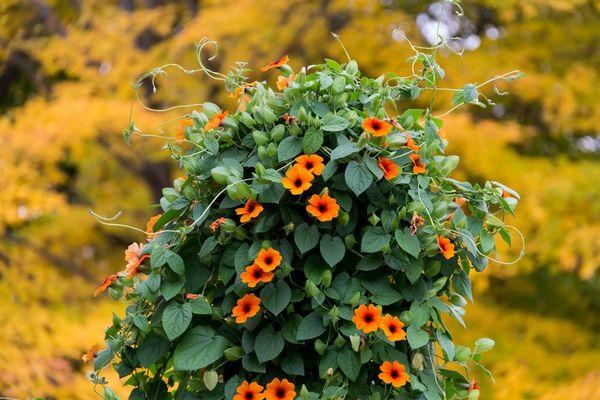
Diseases and pests: control and prevention
The appearance of mold is a clear sign of waterlogging. Insects such as spider mites, scale insects, whiteflies are dangerous to tunbergia. They can be found on the back of the sheet. In the fight against insidious pests, only special chemicals will help.
What to do after flowering
When the tunbergia has faded, it is necessary to collect the seeds and prepare the plant for the winter period.
Seed collection
At the end of the flowering of tunbergia, capsules containing seeds will begin to form in place of the buds. It is advisable to collect them before they open. It is advisable to open the torn boxes with your hands over the covered surface, then dry the resulting seeds and send them to cardboard boxes.
Under these conditions, they can be stored for no more than 2 years.
Preparing for the winter period
In autumn, the plant should be disposed of, since it will not be able to survive the frosts. It is best to transplant it into a pot and keep it at home. But before that, cut off the shoots, leaving about 5 buds.
Thunbergia is one of the best plants for decorating a personal plot, balcony, loggia, a separate corner in the room. The main advantages of culture, thanks to which it is so popular, is its rapid growth and the beauty of flowering.
